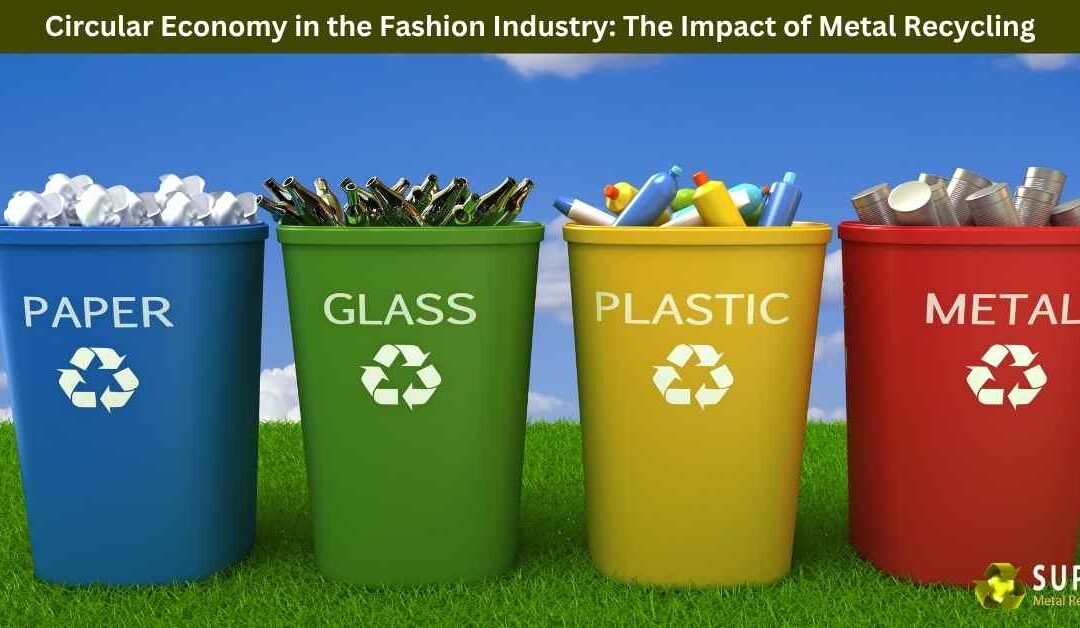When you think of fashion, metal might not be the first material that comes to mind. You probably picture fabrics—cotton, silk, denim, maybe even recycled polyester. But if you look a little closer at your wardrobe, you’ll start to notice the small (but important) role that metal plays. Zippers, buttons, buckles, studs, hooks, clasps, underwires, and even decorative embellishments all rely on metal.
And in a world where fast fashion is under growing scrutiny, and sustainability is no longer a nice-to-have but a must-have, metal recycling is becoming a surprisingly valuable player in the circular fashion movement.
Let’s walk through how this connection works—and why it’s more important than ever.
Fast Fashion, Big Footprint
The fashion industry has long been a major contributor to global waste. Each year, over 92 million tonnes of textile waste are generated worldwide. Many garments are discarded after just a few wears. And while most of the conversation focuses on fabric waste, non-textile components—like metal hardware—often get overlooked.
In traditional systems, when a garment is thrown out, its metal parts go with it. These tiny zippers or clasps may seem insignificant, but multiplied across millions of items, they add up. And since many metals used in fashion are durable and fully recyclable, it’s a missed opportunity.
That’s where circular economy thinking comes into play.
How Metal Recycling Supports a Circular Fashion Economy
A circular economy in fashion aims to keep materials in use for as long as possible—through reuse, repair, recycling, and thoughtful design. Instead of throwing garments away, they are refurbished, broken down into reusable components, or recycled into new products.
Metal recycling fits neatly into this approach.
- Durability and Recyclability: Metals like brass, stainless steel, aluminum, and zinc (common in fashion accessories and hardware) don’t lose their properties when recycled. They can be melted down, reformed, and reintroduced into new products again and again.
- Design for Disassembly: More designers are creating clothes and accessories that are easier to take apart. This allows metal pieces to be removed and sent for recycling separately, rather than being discarded with the garment.
- Recovered Value: Instead of ending up in landfill, these small metal pieces can be collected in bulk and sold to metal recyclers. It’s a smart way for fashion brands to recover value from what would otherwise be waste.
Real-World Examples: Fashion Meets Metal Recycling
Some brands are already stepping up.
- Circular denim brands are designing jeans with removable metal buttons and zippers. These elements are made from recycled metal and can be easily detached before textile recycling.
- Luxury fashion houses have begun working with reclaimed metal hardware, giving new life to old zippers, chains, and buckles from damaged or outdated stock.
- Accessory designers are creating jewelry and handbags using 100% recycled metals, partnering directly with local recyclers or using certified post-consumer scrap.
These are early but powerful examples of how metal recycling can support sustainability without compromising design or quality.
Behind the Scenes: The Role of Metal Recyclers
So, where do we come in?
As a metal recycling company, we’re starting to see more interest from the fashion and textile industries. They’re looking for ways to manage their pre-consumer and post-consumer waste more responsibly. Whether it’s leftover hardware from a production run or a batch of unsold, unsalvageable items, we help recover and recycle the metal components.
In some cases, we even work with designers to educate them on material compatibility—which types of metals are easiest to recover, how to design for recycling, and how to separate mixed materials efficiently.
Challenges Still Ahead
It’s not all smooth sailing, though. The small size of many fashion metal components makes them hard to collect and sort. And many garments still mix metals with plastics or adhesives, making recycling more complicated.
To address these challenges, the industry needs:
- Better infrastructure for garment disassembly
- Consumer awareness to encourage responsible disposal
- More partnerships between fashion brands and metal recyclers
- Innovation in design that prioritises both function and end-of-life recyclability
Worth Remembering
The shift to circular fashion isn’t just about fabric—it’s about every part of the product, including the metal bits we often overlook. By rethinking how we use and recycle metal in the fashion industry, we can reduce waste, conserve resources, and support a more sustainable system from start to finish.
The next time you zip up a jacket or buckle a belt, know that even those small pieces of metal can have a second life—if we treat them like the valuable resources they are.
If you are in Lyndhurst, and looking for a metal recycling service, this is the best way to visit us.
Super Metal Recycling
345 Frankston – Dandenong Road, Dandenong South VIC 3175
(03) 9706 4909


Recent Comments